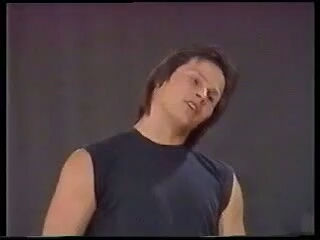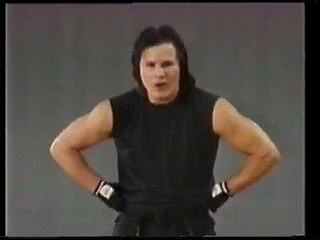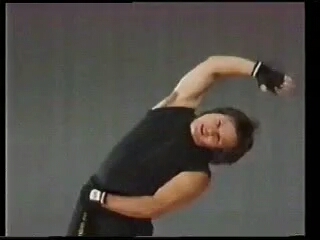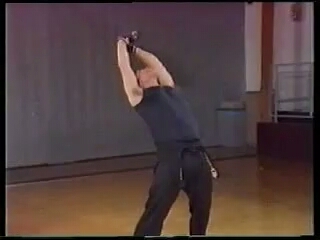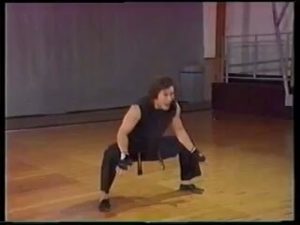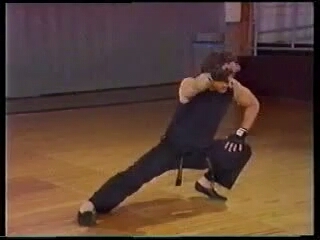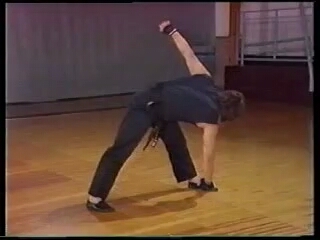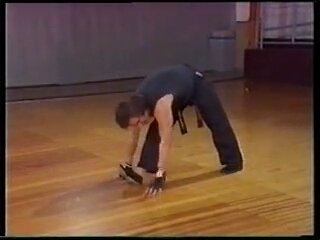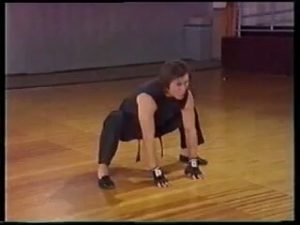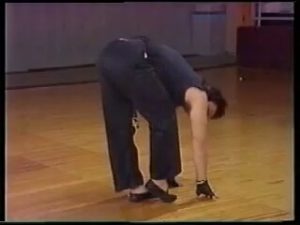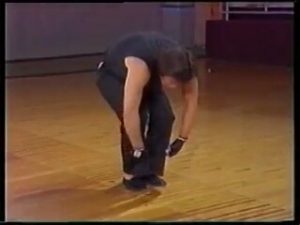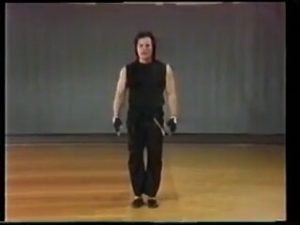Aikido
The Japanese martial art of aikido (“way to unify with your ki”)was founded by Morihei Uyeshiba in 1942. (Ki means “life force.”) Morihei Uyeshiba practiced tenjin shinyo-ryu jujutsu with Tozawa Tokusaburo in 1901, but his true martial calling began in 1911 when he learned daito-ryu aikijujutsuunder ...
|
Aikijujutsu
Aikijujutsu is any jujutsu discipline that focuses on the Japanese principle of “aiki,” in which a practitioner blends with and defeats an opponent by using one’s internal energy (ki or chi). Various schools of jujutsu and aikijujutsu can trace their lineage back to daito-ryu. Conflicting ...
|
Baguazhang
There are two main dichotomies in Chinese martial arts: Shaolin and Wu Dung (Cantonese: Wu Tang). Wu Dung is known for its internal martial arts usually classified under wu dung chuan. Three of wu dung chuan’s better-known styles are tai chi (taiji), hsing-i (xing yi) and baguazhang (also Romanized pa kua ...
|
Bando
Bando, banshay, lethwei and naban are some of the fighting arts you’ll find in Burma (renamed Myanmar in 1989). They are collectively called thaing and are considered by the Burmese to be indigenous arts. However, because Burma borders India and China, martial historians believe that Indians and Chinese have ...
|
Bersilat
The Malays from Yunnan, China, first appeared in Borneo circa 3000 B.C. and had established dynasties in Indonesia and Malaysia by A.D. 100 to 200. Persia opened trade routes with the Malays in A.D. 226. Soon, visiting Indian religious priests arrived from Kerala, India. China’s Sui and Tang dynasties (A.D. 581-907) traded with Sumatra. ...
|
Brazilian Jiu-Jitsu
Brazilian jiu-jitsu is a martial art and combat sport that teaches a smaller person how to defend himself against a larger adversary by using leverage and proper technique. The Gracie family, the founders of BJJ, modified judo and traditional Japanesejujutsu to create the art. It contains stand-up maneuvers, but it is most ...
|
Capoeira
In 1405, Chinese admiral Zheng He set sail from China to East Africa with 28,000 men aboard 62 treasure ships (each larger than a football field). At each stop, Zheng He would leave warriors and laymen to live with native cultures. His last stop was Angola, Africa. Chinese warriors lived with the coastal natives. Decades later, Portuguese slave ...
|
Chin-na
There are four types of Chinese martial arts that are increasingly categorized into increasing levels of difficulty to master: shuai jiao, chin-na, wai chuenand chigong. Chin-na (“seize and break”; Cantonese:kahm nah) isn’t an individual style of Chinese martial arts. It’s a collection of kung fu techniques ...
|
Dragon Kung Fu
The origins of dragon kung fu or dragon fist are not well-known, but the movements derive from the Shaolin martial arts as one of the five animal styles of kung fu that originated from the 18 Buddhist Fists created by Indian Buddhist monk Ta Mo (Bodhidharma). The dragon style has roots in hakka chuen, a style of kung fu from the Hakka ...
|
Escrima
On April 28, 1521, when Ferdinand Magellan waded onto shore of one of the 7000-plus Philippine islands in the name of Spanish King Charles I, Chief Raja Lapulapu killed Ferdinand Magellan with a Philippinekampilan dagger by slicing his leg, then thrusting the dagger into his throat. In response, the Spanish conquerors forbid the ...
|
Hapkido
Hapkido is a Korean martial art that is written with the same three Chinese characters as aikido.Hapkido’s techniques, however, bear little resemblance to aikido’s. Although Choi Yong-sul is credited with founding hapkido, it’s probably more accurate to say that hapkido arose from a collaborative effort among a small group ...
|
Hsing-i Chuan
Hsing-i chuan is one of the major Chinese internal styles of Wu Dung. Although some historians believe Song dynasty Gen. Yue Fei (1103-1142) created hsing-i chuan, others credit Ji Ji-ke (aka Ji Long-feng; 1588-1662) with creating the style based on the movements of his famous spear skills. Ji Ji-ke stressed that the body’s ...
|
Iaido
Iaido was largely influenced by Hayashinizaki Jinsuke Shigenobu (1546-1621) who coined the termiaijutsu, the first Japanese art of sword drawing. Created by Nakayama Hakudo in the 1930s, iaido literally means “the way of mental presence and immediate reaction” but is now known as “the way of sword drawing.” Although ...
|
Judo
Derived from his study of jujutsu, Jigoro Kano created judo as a martial sport usable for self-defense. In 1882, Jigoro Kano founded the Kodokan Judo Institute as the governing body for judo. Judo became an Olympic sport at the 1964 Summer Olympics in Tokyo. When judo was advertised in the United States during the 1960s and 1970s ...
|
Jujitsu
Jujutsu is the art of gentle and supple yielding wherein a person uses an opponent’s energy against him. Some historians consider jujutsu to have evolved among the samurai between the eighth and 16th centuries as an unarmed fighting style. Kicks and punches would have little effect if a warrior lost his sword and had to defeat an ...
|
Kalaripayit
The first written records of Indian combat appeared in the Lotus Sutra (600-500 B.C.), in which it was written that nata (a form of boxing) was learned through dancing. Perhaps the first famous warrior of India was Gautama Siddartha (aka Buddha), who was an expert fencer and pugilist and was possibly schooled in ...
|
Kapu Kuialua
When Tahitian immigrants arrived on the Hawaiian Islands in 1300, they introduced the mentality of war and a caste system. After centuries of warfare that erupted between the various Hawaiian Islands, the most feared and brutal warriors to arise from this caste system were the Koa. The Koa created the first known Hawaiian martial art of ...
|
Karate
After Okinawan King Sato paid tribute to China’s Ming dynasty in 1372, trade was opened between the two countries. In 1392, 36 Shaolin martial artists from Fujian province arrived in Okinawa to teach them Chinese martial arts. This led to the development of Okinawan martial arts that were named after the villages of their origin—naha-te, ...
|
Kempo
Kempo (or kenpo) is the Japanese translation of the Chinese words “chuan fa,” which means “martial arts method” or “way” in English. It’s a generic Japanese term used to describe Chinese martial arts; it’s similar to the way Westerners use kung fu as an umbrella term for Chinese martial arts. ...
|
Kendo
Twenty years after the ancient Japanese samurai class was disbanded at the dawn of Japan’s Meiji Restoration (1866-1867), there was a resurgence of interest in traditional Japanese sword arts that led to the creation of kendo. In 1886, the Japanese police began gathering forms from kenjutsu schools that were famous before ...
|
Kenpo
According to many martial arts historians, kenpokarate was created by William Kwai Sun Chow. From there, it was popularized by Ed Parker first in Hawaii and, later, on the American mainland. Although it’s often categorized as an American martial art, the style’s name is written with the same Chinese characters as chuan fa, a ...
|
Kung Fu
Kung fu (Mandarin: gung fu; Cantonese: gong fu) is a Western- catchall term for the Chinese martial arts. Literally translated, kung fu means “work hard,” which is why people who work hard are described as having a lot of “kung fu.” While the martial arts have existed in China since 2600 B.C., the foundation for ...
|
Kung Fu Animals
Although some animal kung fu styles, like the 10,000 bee technique, originated from animal confrontations or animal-related work (like the fish gate style, which features movements based on the way fishermen cast their nets), most evolved by mimicking the movements and postures animals display in combative situations. In the mid-1600s, Shaolin ...
|
Kung Fu San Soo
Kung fu san soo is a southern Chinese martial art based on the 5 Family Fist style and brought to America by Chinese immigrant Jimmy Haw Woo (1901-1991; Mandarin: Chen Shou-jue) in 1962. Kung fu san soo’s philosophy holds that there are no rules in any fight. Intended to be a “common sense” martial art, kung fu san soo teaches ...
|
Kyokushin
The kanji lettering used to spell kyokushin can be translated as “society for the ultimate truth,” which reflects founder Masutatsu Oyama’s belief that traditional karateka were becoming soft, missing the forceful combative nature of the true art. Kyokushin’s philosophy centers on discipline and self-improvement, which ...
|
Lima Lama
Lima lama is a martial art that originated on the South Pacific island of Samoa. Derived from the words “lima” and “malamalama,” meaning “five fingers of understanding and intelligence,” lima lama symbolically means “hands of wisdom.” Founder Tu’umamao “Tino” Tuiolosega practiced ...
|
Monkey Kung Fu
Even though monkey kung fu is recognized as being created by Kou Sze in the late 1800s in China, its roots can be traced back to the mi hou wu dance of the Han dynasty (206 B.C.-220 A.D.). During his 10-year sentence for murder, Kou Sze watched a monkey colony from his cell in a forest-based prison. After studying the monkeys’ behavior, ...
|
Muay Thai
To Westerners, Thai martial arts is Thai kickboxing or, as it is more commonly known, muay Thai.However, muay Thai is technically not a martial art. Instead, it is a sport that’s been around since 1930. Its techniques are taken from the more lethal art ofmuay boran, which originated from the older fighting style of ling ...
|
Ninjutsu
Ninjutsu is a systemized Japanese martial art used for the specific purpose of espionage. The art was practiced by the shinobi or ninja that rose to prominence during Japan’s Sengoku period (1467-1573; aka Warring States period). However, the origin of ninjutsu is just as secretive as the men who practiced the art. One ...
|
Pentjak Silat
The Indonesian martial art of pentjak silat is little known outside its country of origin. Practitioners of the art attribute historic victories against Holland and Japan to pentjak silat’s mystical practice of channeling tenaga dalam (the Indonesian version of Chinese chi kung). Several legends dictate that women ...
|
Praying Mantis Kung Fu
According to Chinese lore, when Shaolin monk Wang Lung, spurned by a recent combative loss, was studying his Buddhist texts, he was disturbed by the sound of a praying mantis attacking a cricket. Astonished by how easily the mantis defeated its prey, Wang Lung prodded the mantis with a piece of straw and observed how the insect jumped back and ...
|
Sambo
From Russian tribes’ heritage of combat sports evolved a martial art called systema. Systema was created by the Cossacks in A.D. 948 and is thought to originate from Hun and Mongolian invasions and is thus likely influenced by Chinese martial arts. Systema formed the foundation for the art ofsambo, which arose after the ...
|
Sanshou
Sanshou (aka sanda; “unsanctioned fighting”) is a Chinese martial art that arose in 1924 because of the superior close-quarters-combat skills of the Japanese soldiers over their inadequate Russian counterparts during the Russo-Japanese War (1904-1905). The new Soviet power developed intense hand-to-hand combat training ...
|
Shaolin Kung Fu
Although martial arts have been documented in China since 2600 B.C., the source of today’s martial arts originate from A.D. 527, when Indian monk Ta Mo (Bodhidharma) arrived at Shaolin in Henan province. Before his arrival, the Shaolin monks practiced Taoism and meditation. Ta Mo found the monks to be lacking physical ability stating, “The ...
|
Shotokan
In 1921, Gichin Funakoshi (1868-1957) introduced Okinawan karate to Japan. Gichin Funakoshi developed his simpler style of karate from studying the Okinawan karate styles of shorei-ryu and shorin-ryu. In 1939, Gichin Funakoshi built his first official karate dojo in the Mejiro neighborhood of Toshima in Tokyo. He ...
|
Taekwondo
The term taekwondo was coined in 1955 by South Korean Gen. Choi Hong-hi and thus he was controversially credited as the art’s founder. The art draws from Japanese karate and Korea’s oldest martial art, taekkyon. Taekwondo was born of power struggles. Along with Nam Tae-hi and Han Cha-kyo, Gen. Choi Hong-hi adopted the ...
|
Tai Chi
After Shaolin monk Zhang San-feng left Shaolin, he ended up living in the Wu Dung Mountains and developed a new school of martial arts called wu dung (Cantonese: wu tang.) As legend goes, Zhang San-feng saw a crane fighting a snake. The snake used soft coiling motions to ward off the bird’s attacks, and the crane used its ...
|
Tang Soo Do
During Korea’s Three Kingdom period (Koguryo, Paechta and Silla kingdoms; 57 B.C. - A.D. 668), the Chinese Tang dynasty helped the Silla defeat the Japanese-backed Paechta kingdom. To honor the Tang dynasty, the Silla created the martial arttangsu (Chinese hand) that was then taught to Korea’s renowned Hwarang warriors. In 1945, ...
|
Tiger Kung Fu
While tiger kung fu was one of the original five animal styles of Shaolin, it wasn't until around 1758 when tiger kung fu (hu chuan) gained martial fame via Hong Xi-guan, one of the Ten Tigers of Shaolin kung fu. Hong Xi-guan further developed tiger kung fu by incorporating the tiger’s vicious breaking, ripping and tearing techniques ...
|
White Crane Kung Fu
White-crane kung fuis one of the five animal styles found in the Shaolin martial arts. However, other styles of white crane have arisen independently of Shaolin. After Ah Dat-ta became a Buddhist lama monk in 1450s Tibet, he retreated to the mountains and created a style of white-crane kung fu based on what he learned from watching a fight ...
|
Wing Chun
Wing chun (aka ving tsun; Mandarin: yong chuin) is a Chinese martial art that arose soon after the burning of the Song Shan Shaolin Temple circa 1735. Because of a lack of written historical records, wing chun’s origins are still heavily debated. One story states that Shaolin monk Zhi Shan and Shaolin hero Hong ...
|
XMA
Xtreme Martial Arts, the brainchild of Mike Chaturantabut, is an entertainment brand of martial arts that combines martial arts techniques, acrobatics and gymnastics. With an emphasis on performance, XMA focuses on the flashy martial arts movements seen in the Chinese martial arts films of the early 1980s. It also taps into the quick, whippy ...
|

